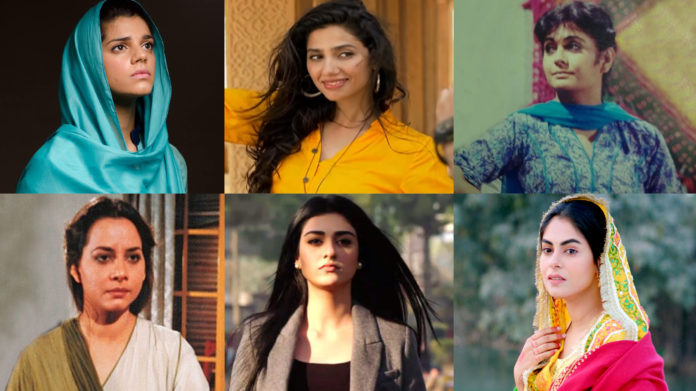The entertainment industry tends to serve as a safe haven for all those who are bogged down by daily life, jumping through hoops of capitalism and social norms just to stay alive. When one elevates an industry and its offerings to a degree where the whole deal becomes a form of escapism, it’s also important to note what one is seeking refuge from, and in. Moreover, the kind of social currency stars now hold is unlike what it used to be before. Social media is a driving influence, and with online platforms on which many watch these shows factoring into the hegemony of said influence, the kind of content that is released and broadcast can, and should be viewed with a critical lens.
Gone are the days when one could enjoy senseless writing, or view a show or film without it impacting one’s worldview. Keeping this in mind, the representation on-screen and the kind of message propagated is of the utmost importance.
In all of this, one conversation that has been had, and continues to ruffle feathers, is that of the kind of female representation one sees. Unfortunately, while holding great scope for vital representation, Pakistani television seems to drop the ball every now and then.
What We’re Used To Seeing
The endless evil-saas-oppressed-bahu saga that we’ve been consuming has hit a wall regarding the variables it can offer. This storytelling trope goes in hard on the fact that life after marriage is exceedingly difficult for the new bride, because a scheming mother-in-law lurks behind the shadows, waiting to pounce at the opportunity of making the daughter-in-law’s life a living hell.
Not only does this paint women in varying positions with a single brush stroke, but it’s also been done to death. That is not to say that this does not hold merit. Surely, there are various accounts of women who suffer at the hands of their in-laws. However, do we need every second drama to double down on this to get the point across?
The oppressed woman trope is another one that has been overused. A woman, with virtues and values that would put clerics to shame, bears the brunt of anger, ridicule, and mockery, till the instigating villain comes to light at the very end, exalting her status in the family through passive redemption.
On the other hand, the villainous female – an open-haired, red lipstick-wearing deviant – who wears modern attire, is always portrayed in a negative light, even in some of the more iconic shows that people have come to love. Dramas go the extra mile to say: if she’s wearing a shalwar kameez with a dupatta on her head, we love her. But jeans? Tauba tauba.
These are just some of the overused plot variations that we’re used to seeing play out. That is not to say that exemplary women have not been portrayed on screen. They have. But the occurrences of such strong female leads are so rare, that audiences have ended up making heroes out of the scarce few that have graced our screens. Indeed, we can do better.
Why Do We Need To Do Better?
Years back the stories seemed to be much evolved, where strong female leads graced our screens on channels like PTV. The peak of Pakistani television seemed to have it all, but somewhere down the line, the stories were lost, and those characters were slowly eradicated.
The rules of sociology dictate that much of our worldview is formed by primary and secondary socialization. While primary socialization entails our immediate circle of influence (family and friends) and, subsequently, factors forming our worldview, secondary socialization consists of a more external sphere of influence, such as school, or various forms of media.
If all women see are damsels in distress waiting for a man to come to save them, or women who bear the brunt of all misgivings directed at them, hoping for redemption out of the blue, those values are subconsciously imbibed. This, to a great extent, shapes how we map out the trajectory of our lives. The epitome of happiness becomes akin to finding a man who will save us, and dealing with atrocities in the name of love.
What Do We Want To See?
The golden era of television need not be a lost relic. There is nothing stopping the media industry from bringing back a time that people so clearly reminisce with sheer fondness. However, to get the creative juices of our media brethren flowing, a proposal of sorts must be put forth, suggestive of a renaissance.
Bring back the outspoken, bold, unnervingly brave female lead who not only knew her place in the world but fought for the same when its positionality was threatened.
Show us the well-read, well-rounded poetess or writer, who used her journal entries as a literary device to move the plot forward, filled with intelligent musings and miniature works of spellbinding art.
Shed light on the single mother with multiple children, struggling to make ends meet, but persevering, without using a man as a crutch, as she battles the world vehemently, emerging victorious due to her immense strength and grit.
Shine the spotlight on the feminist who has endured living as a second-class citizen through various sociopolitical climates, who now finds comfort when she takes to the streets to channel her rage, becoming a beacon of hope in the process.
Narrate the tale of a transwoman who must journey across the tumultuous landscape of our region to come to terms with her identity, coming into her own and blossoming, only to then combat the gaze with which society views the transgender community.
Share the stories of the post-menopausal woman, ferociously grappling with the idea of age, locking eyes with a multitude of emotions in the process.
Bring back imperfect, flawed, human women – women who get angry, who scream, who cannot be placed into boxes and archetypes. Bring back women who conform to the norms, befriending the women that are repulsed by the same. Bring back sisterhood with meaning. Bring back high-stake rivalries that go beyond the realm of one’s home and husband. Bring back the women who understand the complexities of their gender, fully comprehending how it is, both, a blessing and a curse.
Summing It Up
To conclude, the landscape of television (and film, for that matter) is an open field, waiting to be inundated by ideas that have either been lost, forgotten, or have remained untouched. Women exist in varying capacities and possess galaxies inside them waiting to be explored, and the female leads we see on-screen must reflect that. The onus, now, lies on filmmakers and showrunners alike, to don caps of curiosity and innovation and tell these stories, instead of constantly playing it safe.




